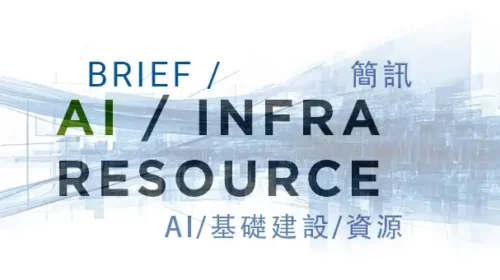Daqo’s profit plunges as growing polysilicon glut casts cloud over sector

The maker of the main ingredient used in solar panel production said its inventory rose sharply in the first quarter as its average selling price fell 25% from a fourth-quarter peak
Key Takeaways:
- Daqo New Energy’s revenue and profit plunged by about half in the first quarter as polysilicon prices fell and the company’s inventory grew
- The company’s average selling price could fall further in the second quarter as new capacity comes on stream and it clears out inventory
By Doug Young
Let the blood-letting begin.
The latest quarterly results from Daqo New Energy Corp. (DQ.US; 688303.SS) were filled with such blood, as the polysilicon sector where the company is a global leader entered a highly anticipated correction after a huge price run-up over the last two years. That correction is being fueled in no small part by the huge addition of new capacity by most of the world’s major producers of the main ingredient used to make solar panels.
The group is quite undervalued at the moment, partly because they are seen more as a commodity maker rather than producer of a high value-added product like finished solar panels. Investors are also quite bearish on the group right now due to the painful correction shaping up, which is likely to last at least for the next year or two as the market absorbs all the new polysilicon capacity coming on stream.
Daqo has always traded at a discount to its peers, probably due to the location of its headquarters in the controversial Xinjiang region of China. Its stock now trades at a very low price-to-earnings (P/E) ratio of just 2, though the figure creeps up slightly to 2.4 on a forward-basis on expectation that its profit will fall 30% this year during the polysilicon correction.
Still, both figures are well below the current P/E of 4.7 for Daqo’s hometown rival GCL Technology (3800.HK), which also gave some preliminary first-quarter results earlier this week that were much better than Daqo’s. Germany’s Wacker Chemie (WCH.DE) also trades at a much higher 5.7 P/E ratio, though the figure falls to 12.8 on a forward basis, again on expectation for falling profits.
Daqo is quite representative of what often happens in China for hot sectors like polysilicon. As such sectors heat up, in this case fueled by the global rush to install more renewable energy, producers in the supply chain often add huge amounts of new capacity to try and profit from the rush. The company had about 100,000 MT of annual capacity at the end of last year, but is building a massive new facility in the Inner Mongolia region that will triple that amount to about 300,000 MT.
In its latest report, Daqo says it completed construction of the first phase of that project with 100,000 MT of capacity in April, with production expected to ramp up to full capacity by June.
With that new capacity now producing, Daqo said it expects to produce between 44,000 and 46,000 MT of polysilicon in the second quarter, up by about 35% from the 33,848 MT it produced in the first quarter. For the full year the company plans to produce between 193,000 MT and 198,000 MT of polysilicon, representing an even larger 45% increase from last year’s level.
“We believe that the increasing needs for polysilicon of very high purity will help differentiate us from our competitors thanks to our ability to produce the type of polysilicon required for the next generation of N-type technology,” CEO Zhang Longgen said, explaining how Daqo expects to differentiate itself from its rivals as all the new global capacity comes onstream.
Inventory build-up
Next, we’ll take a deeper dive into Daqo’s latest results, which show a worrisome trend of plunging prices combined with an accumulation of inventory that the company plans to clear out in the current quarter – come hell or high water. That inventory-clearing exercise is likely to depress prices even further, cutting into the company’s revenue and profits.
We’ve already said that Daqo produced 33,848 MT of polysilicon in the first quarter, which was up by 67% from the 20,185 MT it produced just two years earlier. But despite producing that much polysilicon, the company only sold 25,284 MT – or about three-quarters of its total output.
The inventory accumulated as average polysilicon prices continued to plunge during the quarter after peaking late last year. Daqo said its average selling price for the material was $27.38 per kilogram during the quarter, down about 25% from the fourth quarter’s average of $37.41 per kilogram when prices were at their peak.
As its sales and polysilicon prices sagged, Daqo’s revenue plunged 45% in the first quarter to $710 million from $1.28 billion a year earlier. Its profit fell by a similar amount to $278.8 million from $535.8 million a year earlier.
“Polysilicon demand was weak in January due to the seasonal slowdown in the solar PV industry,” said CEO Zhang. “In February, lower module prices stimulated end-market demand causing a meaningful recovery in demand and price improvement across the solar value chain.”
The company appears to be hoping that prices will stabilize and perhaps even rebound a little, at least based on plans to clear out its inventory. Zhang said Daqo plans to boost its shipments in the second quarter to 59,000 MT to 61,000 MT, which would represent a huge jump of about 140% from its first-quarter shipments. Such a move looks necessary to avoid further inventory build-up, but could also be problematic if prices start to fall again.
In its limited first-quarter update, GCL said its first quarter revenue and profit both actually rose 35% and 60%, respectively, contrasting sharply with Daqo’s big declines for both figures. “Before a correction in the market price of polysilicon began to materialize, the company took the initiative to bring the price of polysilicon products back to a more sustainable level and continued to expand its market share of granular silicon,” GCL said in brief comments with its update.
In a slight surprise, Daqo’s stock actually rose 3.7% in New York the day its report came out, despite its less-than-stellar results. That’s probably at least partly because the stock already trades at such a low P/E multiple, and shows that perhaps investors were expecting even worse. GCL’s stock fell 2.5% in Hong Kong the day after it published its report, despite the relatively strong first-quarter data.
At the end of the day, Daqo, GCL and their peers look set for a rocky road in the next couple of years as their new capacity comes on stream and eventually gets absorbed by the global market. At the same time, Daqo’s stock does seem quite undervalued at the moment and could have some potential upside if its production and profits show signs of stabilizing later this year.
To subscribe to Bamboo Works free weekly newsletter, click here





